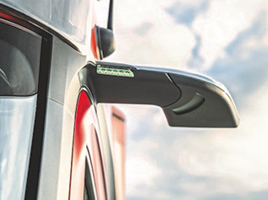Over the last 100 years, the world has flourished in an age of discovery that affects every aspect of our daily lives. The way we live and travel today bears little resemblance to the lifestyle of the last century, however, people have continued their love affair with cars, and it shows no signs of stopping.
Today’s automotive industry is changing at a pace that has not been seen in many years as new advancements in materials allow us to create vehicles that have a better riding experience.

Stated by a urethane manufacturer, since polyurethane was first found to be a suitable material, it has been adapted to serve many purposes. From assembly line components to vehicular parts, we will explore the dynamic way that urethane has been used in the industry.
Polyurethane Uses in the Automotive Industry
Shock-Absorbing
Ever since polyurethane was used in shock-absorbing components in vehicles, it has been used in other ways to improve riding experience. For example, polyurethane foam is being used more in acoustic dampening applications in a variety of vehicles.
Decreased Noise
Automakers are using this technology to make high-end models quieter for passengers, using casted or spray foams to isolate noise.
Manufacturers of larger pickups have trouble combatting road and wind noise. Large tires and awkward body shape are to blame so polyurethane is used to mitigate these noises. Foam-filled panels and polyurethane body mounts are becoming pretty common.
Many automakers have started using cast polyurethane in muffler systems. Since it is more resistant to environmental degradation than it’s common alternative, rubber, urethane muffler mounts will far outlast any other varieties in the most demanding environments.
By using specially formulated high-resilience blends, a large amount of vibration and sound can be alleviated by switching to a urethane muffler system.
Electric Cars
The electric cars currently on our roadways use large amounts of urethane to give riders the smoothest driving experience possible. Polyurethane is used extensively in electric car batteries.
By isolating any shock and vibration the car may experience, batteries are more resilient and last longer when urethane packing technologies are used.
Dunnage
Tools used to assemble vehicles have benefited greatly from urethane innovation. Urethane dunnage is an essential part of vehicle construction. Polyurethane dunnage was created to minimize any damage that may occur during transport allowing for a decrease in part rejection.
Polyurethane Hangars are used extensively to manipulate the body of a car into various positions during assembly. The increased abrasion resistance means tooling components need to be changed less often, minimizing downtime.
Polymer manufacturers continue to observe industry needs, and work closely with the auto sector to improve the capabilities of the vehicles they produce. Automated processes will continue to implement polyurethane to increase productivity. The automotive industry will continue to benefit from urethane innovation, even as the needs of the industry change over time.







